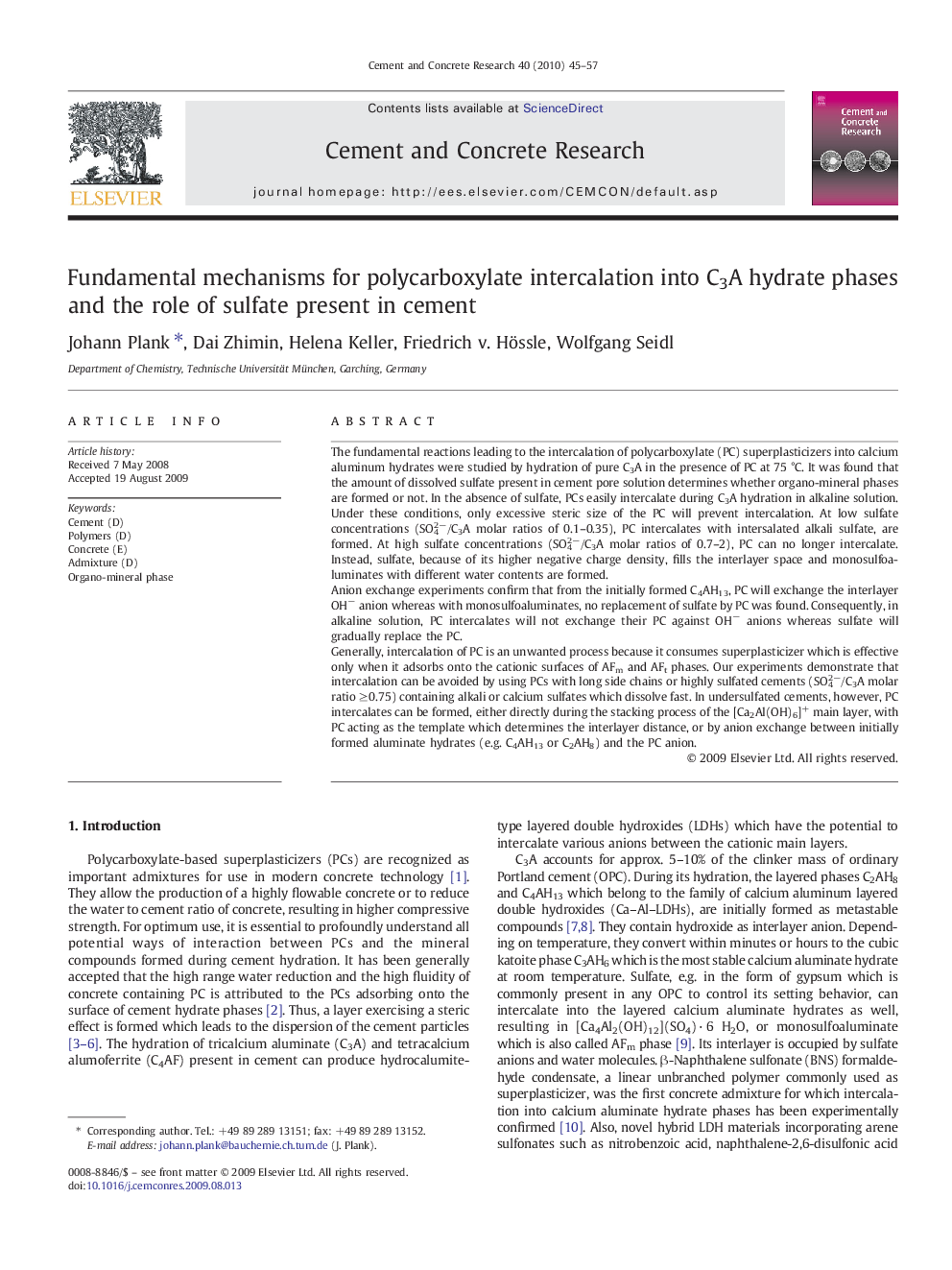| Article ID | Journal | Published Year | Pages | File Type |
|---|---|---|---|---|
| 1457137 | Cement and Concrete Research | 2010 | 13 Pages |
The fundamental reactions leading to the intercalation of polycarboxylate (PC) superplasticizers into calcium aluminum hydrates were studied by hydration of pure C3A in the presence of PC at 75 °C. It was found that the amount of dissolved sulfate present in cement pore solution determines whether organo-mineral phases are formed or not. In the absence of sulfate, PCs easily intercalate during C3A hydration in alkaline solution. Under these conditions, only excessive steric size of the PC will prevent intercalation. At low sulfate concentrations (SO42−/C3A molar ratios of 0.1–0.35), PC intercalates with intersalated alkali sulfate, are formed. At high sulfate concentrations (SO42−/C3A molar ratios of 0.7–2), PC can no longer intercalate. Instead, sulfate, because of its higher negative charge density, fills the interlayer space and monosulfoaluminates with different water contents are formed.Anion exchange experiments confirm that from the initially formed C4AH13, PC will exchange the interlayer OH− anion whereas with monosulfoaluminates, no replacement of sulfate by PC was found. Consequently, in alkaline solution, PC intercalates will not exchange their PC against OH− anions whereas sulfate will gradually replace the PC.Generally, intercalation of PC is an unwanted process because it consumes superplasticizer which is effective only when it adsorbs onto the cationic surfaces of AFm and AFt phases. Our experiments demonstrate that intercalation can be avoided by using PCs with long side chains or highly sulfated cements (SO42−/C3A molar ratio ≥ 0.75) containing alkali or calcium sulfates which dissolve fast. In undersulfated cements, however, PC intercalates can be formed, either directly during the stacking process of the [Ca2Al(OH)6]+ main layer, with PC acting as the template which determines the interlayer distance, or by anion exchange between initially formed aluminate hydrates (e.g. C4AH13 or C2AH8) and the PC anion.
